Archive page
What Causes Inflammation?
Chronic inflammation is one of the most significant health issues many of us will face today. It’s been linked to everything from chronic pain to a wide range of other mild and serious medical conditions.
It’s important not to mistake acute inflammation for chronic inflammation.
Acute inflammation describes your body’s natural defense mechanism against injuries or toxins. When your immune system is constantly stressed, it can then lead to chronic inflammation which in turn can lead to other conditions.
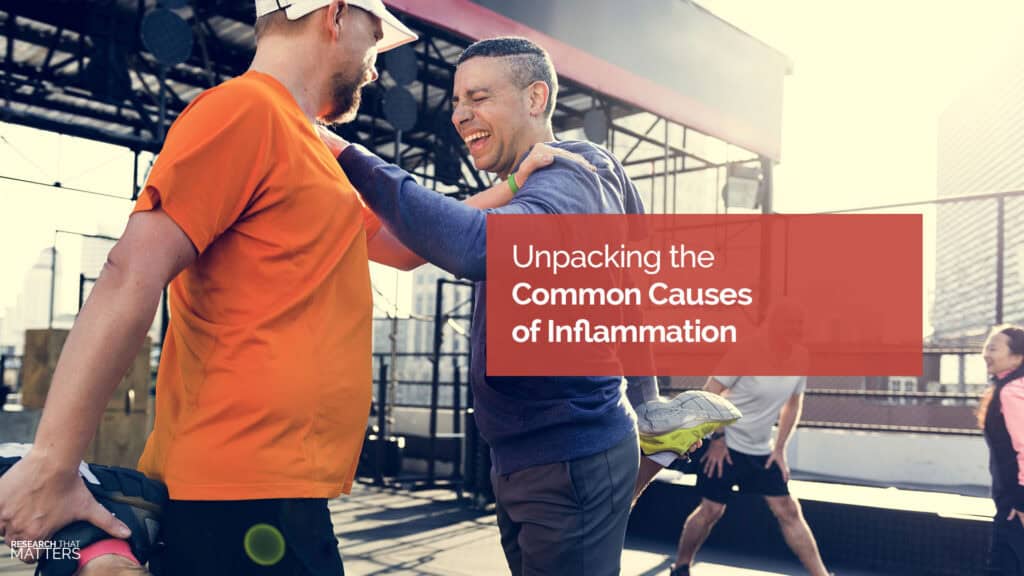
Chronic Inflammation
In 2014, it was estimated that over 50% of people had at least one chronic condition, and 40% had more than one.
Chronic inflammatory diseases can include respiratory and heart disorders as well as diabetes. The majority of these disorders are linked directly to our lifestyle choices. Each day you have the option to either increase or decrease your state of inflammation.
Here are some fundamental ways to start taking your life back from chronic inflammation:
- Eat Fruits and vegetables are high in natural antioxidants and may protect the body against inflammation.
- Get enough Maintaining a regular sleep schedule can reduce your physical and emotional stress levels, which has been linked to a lower risk of chronic inflammation.
- Stay Exercise can lower the amount of pro-inflammatory chemicals in your body and benefit your cardiovascular and mental health.
Reducing your risk of chronic disease and inflammation begins with the choices you make each and every day, and we’re here to help you make the best decisions to help you live a full, active, and healthy life.
If you believe you’re not eating, sleeping, or moving as well as you would like, be sure you have an appointment scheduled with us. Together, we’ll analyze your habits and create a plan to get you and your well-being back on track.
Most Chronic Diseases are Linked to Inflammation
One of the most important health discoveries of the past 20 years has been that the immune system and inflammatory process are involved in nearly every mental and physical health problem we encounter today. It’s safe to say that chronic inflammation is a leading cause of chronic disease.
The Effects of Chronic Inflammation on the Body
Chronic inflammation is a condition that can affect your immune system and can influence all of your organs, tissues, and cells. Unlike the normal inflammatory response that happens after an injury and goes away within a few days, chronic inflammation is an abnormal response that can last years.
Here are just a few of the ways chronic inflammation can affect your body:
- Chronic inflammation can cause your immune system to function sub-optimally.
- Fatigue, increased blood pressure, insulin resistance, and poor appetite have also been linked to chronic inflammation.
- Heart disease and other neurodegenerative disorders have been linked to long-term chronic inflammation.
It’s true. It’s impossible to prevent chronic disease completely, but you have the power to reduce your risk every day. Taking action steps like eating right and exercising each day have been shown to dramatically decrease chronic inflammation and your likelihood of developing a chronic disease.
Know we’re here to help you live an active and fulfilling life. We understand that it’s hard to get enough exercise each day when you’re in pain. We hope you’ll take a moment to schedule a movement assessment with us so we can create a plan to help you start moving and feeling better.
Let’s take the first step towards reducing your risk of chronic disease together!
How Inflammation Affects Your Body
Inflammation is like a check engine light for your body. It tells you that something isn’t quite right, and you should pay attention.
The first step in discovering the cause of the problem is determining whether you have acute or chronic inflammation.
Acute inflammation is short-term and plays a critical role in healing and injury repair. Chronic inflammation on the other hand describes a condition where your immune system continues to produce white blood cells and chemicals even after the injury is gone.
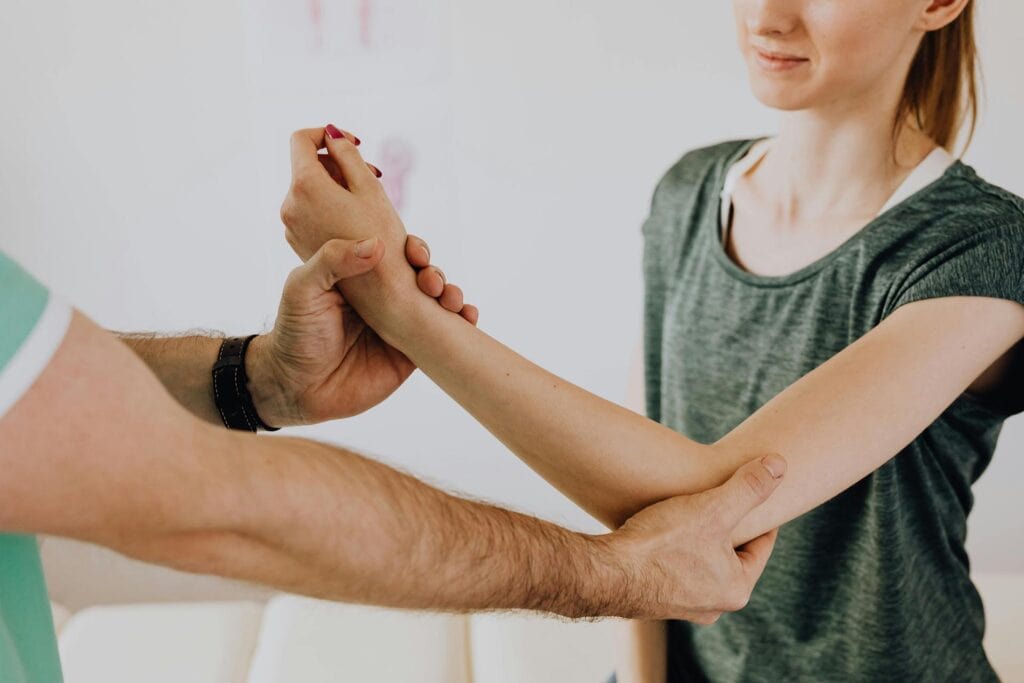
The Signs of Chronic Inflammation
The combination of chronic inflammation and an excess of white blood cells can cause some problems for your immune system. In some cases, your immune system may even begin to target healthy cells and structures. If sustained over a long period of time, you may experience changes in your cells, tissues, and organs that can increase the likelihood of disease. Of course, one of the most significant challenges is that chronic inflammation can be invisible unless you know where to look.
Here are a few of the most common signs of chronic inflammation:
- Insulin Insulin helps control the sugar level in your blood, and inflammation could affect how well your insulin works.
- Muscle Chronic inflammation can cause your immune system to mistakenly attack and inflame your muscles, which could make you weaker.
- Fatigue is a sign of long-term inflammation and common in inflammatory diseases like fibromyalgia, multiple sclerosis, lupus, and rheumatoid arthritis.
If you’ve been living with muscle weakness, fatigue, or other nagging pains, you may also be living with chronic inflammation. It’s often your daily habits that contribute to this state of chronic inflammation.
Know that our team specializes in helping you create a healthy lifestyle through daily habits that combat chronic inflammation. We invite you to take the first step towards better health by scheduling your next visit with us today so we can work together to help you feel and function at your best.
How to Reduce Pain and Inflammation Naturally
While the inflammatory process is extremely complex, the solutions aren’t. Reducing pain and inflammation naturally is simple with the right strategy. Maintaining a healthy weight, eating a balanced diet, getting enough sleep, and exercising regularly are all ways that have been shown to effectively reduce pain and inflammation naturally.
Don't Wait to Get Care
Your diet and daily exercise routine play a huge role in managing chronic inflammation because each influences your weight and sleep patterns. Foods high in antioxidants (like berries, turmeric, green vegetables) can lower your overall inflammation and provide you with more energy. Daily exercise can help protect you against conditions such as heart disease and obesity, which have both been linked to chronic inflammation.
Did you know…
- Antioxidants known as polyphenols can lower inflammation.
- Even 20 minutes of daily exercise can have an anti-inflammatory effect.
- Proper sleep patterns encourage recovery and can lower stress and inflammation levels.
Reducing pain and inflammation naturally starts with your ability to move your body and exercise daily. If you notice an injury or pain is slowing you down, take a moment to schedule an appointment with us today.
Our expert team will work with you side by side to help you move better, and once you start moving better, everything else becomes easier! Give us a call. Let’s make chronic inflammation a thing of the past.
Is Inflammation Causing You Pain and Discomfort?
Call or schedule an appointment online and we can help you reduce your inflammation and finally let your body begin its healing journey.
Schedule an AppointmentContact UsWhy Does My Neck Hurt?
Your neck has a tough job. It has to hold, stabilize, and move the weight of your head every day for a lifetime. Holding up 11 pounds may not seem like a lot, but the seven bones and 20 muscles of your neck need to work together in perfect harmony for you to move your head around and keep that weight balanced. Postural changes, sudden injuries, and arthritis are a few of the primary causes of neck pain. Pain can often be traced to a problem with either the muscles, bones, discs, or nerves in your neck.
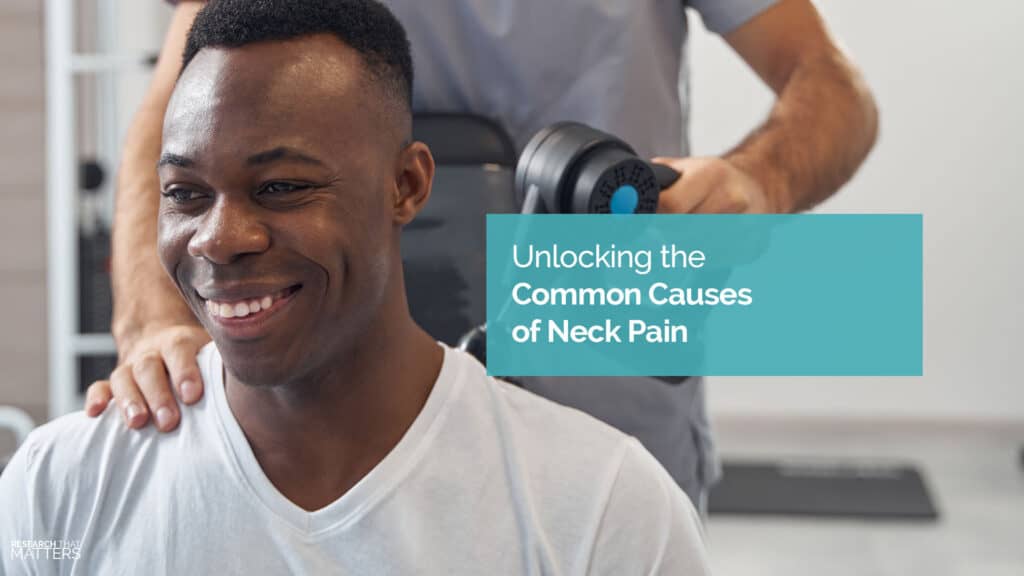
Respond Proactively to Your Pain
If you’ve ever been unable to turn your head for a day or two, you know how debilitating and life-changing neck pain can be. The sharp muscle spasms that restrict your ability to move can happen when your body tries to protect a spinal joint that isn’t moving correctly.
Almost every bone in your neck has a pair of sliding joints towards the back called facet joints. If an adhesion forms or the joint is stuck, your body will try to compensate or work around the issue for a little while. But, over time, this compensation can cause a cascade of additional challenges.
- Sudden injuries, arthritis, and postural issues can all contribute to neck pain.
- The small sliding joints (facet joints) of your neck can become stuck and cause muscles spasms and pain.
- Gentle spinal adjustments combined with daily stretching can help restore the motion of your facet joints and reduce pain.
Pain in your neck is your body’s way of saying “pain attention”! Even if it eases up by the end of the day, it’s a smart idea to have us evaluate your motion. Movement assessments are a part of our examination and provide us with an incredible amount of information about your body. By taking a proactive approach today, you may be able to prevent future episodes of neck pain and stiffness in the future.
Stenosis: How a Pinch in Your Neck Can Affect Your Whole Body
Have you been told that you have spinal stenosis? If so, you’re not alone. Millions of people suffer from spinal stenosis each day, and it’s the number one reason people over 65 years old have spine surgery. Spinal stenosis is the compression, or pinching, of your spinal cord. It can occur due to a disc herniation, bone spur, or ligament overgrowth. However, drugs and surgery are not the only way to find relief.
Take the Pressure Off
For many people, the most significant challenge associated with spinal stenosis is the decreased ability to get up and move! Severe pinching in your neck can cause issues with your arms and legs. One of the best ways to relieve the symptoms associated with spinal stenosis is to open up the spinal canal and take the pressure off the nerves and spinal cord. Many chiropractic techniques focus on decreasing the pressure on your spinal cord, relieving the symptoms associated with spinal stenosis.
- Spinal stenosis is a narrowing of the spaces within your spine, which can put pressure on the nerves that travel through the spine.
- Spinal stenosis is most commonly caused by degenerative changes in the spine related to osteoarthritis.
- Relief can often be found by building up your strength while improving the flexibility and stability of your spine with chiropractic care.
After chiropractic care, many patients report having a decrease in their symptoms, the ability to walk further without pain and find an improvement in their overall quality of life. If you have been slowed down due to spinal stenosis, do not hesitate to schedule an evaluation with us. We will provide a complete evaluation and guide you towards the best treatment options to find relief.
Is My Arm Pain Coming from My Neck?
Pain in your hand, wrist, or arm can be frustrating. You don’t realize how much you use your arms and hands until pain, numbness, or tingling gets in the way. Most of us don’t usually think that an issue in our neck may cause our arm pain. But it’s very common that arm pain can be traced back to a nerve issue in your neck.
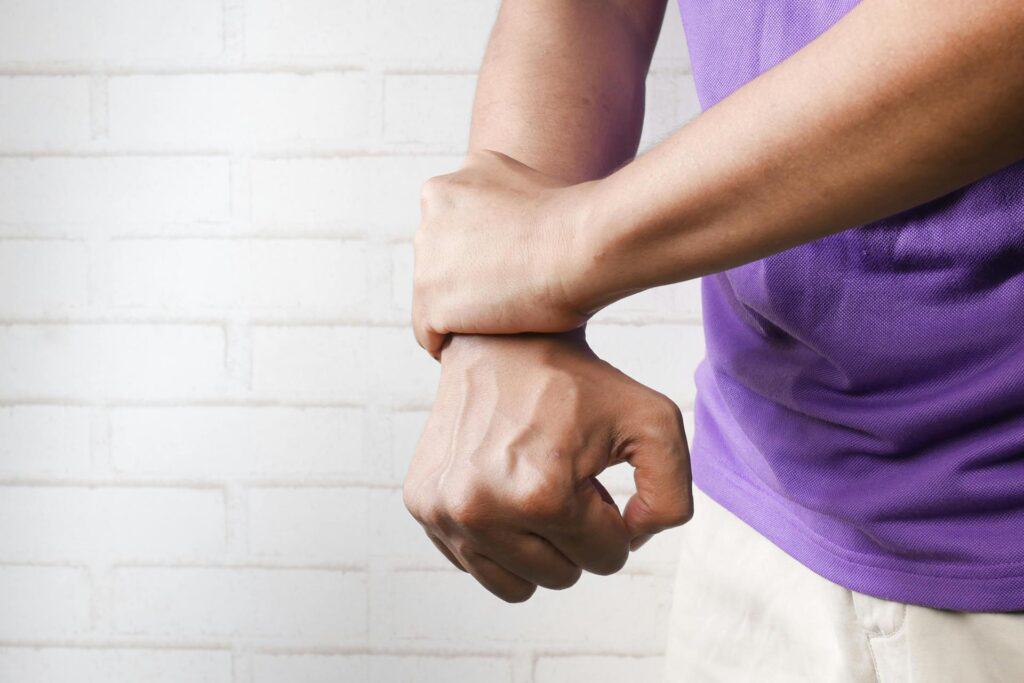
Pinched Nerves Can Affect The Arms, Hands, and Shoulders
Hand, wrist, and arm pain often starts with a neck problem. When a spinal disc in your neck irritates or presses on a nerve, it can result in arm pain. Just like the power lines that bring electricity to your house, your brain and spinal cord split into individual nerve roots that deliver information to every part of your body. The nerves in your neck are specifically focused on providing strength and sensation to your head and arms.
- A bulged or herniated disc in your neck can irritate or compress the nerves that travel to your hands, arms, and shoulders.
- A recent study of people with cervical (neck) disc herniation showed improvement in over 86% of people who received chiropractic adjustments.
- Improving spinal mobility, decreasing inflammation, and improving your posture may help prevent future episodes of neck and arm pain.
A painful arm as a result of a pinched nerve in your neck very rarely requires surgery. Most people can find long-term relief with conservative care, such as chiropractic.
Getting rid of the inflammation and giving the disc time to heal are part of a complete plan we use each day to help our patients reduce their symptoms and get their lives back.
Neck Pain: How To Find Relief
An episode of neck pain can quickly hamper your everyday activities. Whether you began experiencing pain due to injury, degenerative spinal changes, or poor posture, it can be difficult to think about anything except the pain when you’re struggling. It’s estimated that 70% of people experience neck pain in their life, but you should know there is a path towards relief.
Small Adjustment. Big Changes.
Neck pain can create everything from headaches to pain in your arms and hands to pain directly on your neck. Different types of pain indicate different issues. The most common reasons for neck pain are strained muscles and stuck spinal joints. Each of these challenges can cause a lot of pain and may have you fearing that you have a more significant issue. But, with a proper examination, our team can pinpoint the cause of your pain and provide a complete plan of care to help you reclaim your life from neck pain.
- Facet joints are small spinal joints at the back of your spine which can become fixated or stuck and cause pain.
- Muscle strains can occur due to poor posture at your desk or sleeping in an awkward position.
- Motion heals: relief typically begins by reducing the inflammation and improving your range of motion.
A small adjustment can make big changes in your quality of life. Our practice is focused on helping you feel (and function) better by improving your spinal motion and then providing you with the stretches and exercises you can do at home to continue your improvement. If neck pain has got in the way of you enjoying your life- give us a call. Our team is here to help.
Science Sources:
Intervertebral Kinematics of the Cervical Spine. The Spine Journal. 2018.
Spinal Stenosis. The Mayo Clinic. 2022.
Cervical Nerve Root Injections or Spinal Manipulative Therapy. JMPT. 2016.
Spinal Manipulation, Medication, or Exercise. Annals of Internal Medicine. 2012.
5 Healthy Habits That Prevent Chronic Disease. Cleveland Clinic. 2020.
Suffering from Neck Pain?
Call or schedule an appointment online to see how we can help ease your neck pain and begin your journey of healing.
Schedule an AppointmentContact UsHow to Find Shoulder Pain Relief
Your shoulder is the most unstable and moveable joint in your body. Its wide range of motion occurs due to four primary muscles and their tendons, which together are called the rotator cuff. If your shoulder becomes inflamed or an impingement happens, you may make the mistake of trying to avoid using your arm to help it heal. It may surprise you to learn that not moving can actually contribute to more pain or even lead to a frozen shoulder. Controlled movement is one of the best ways to heal.
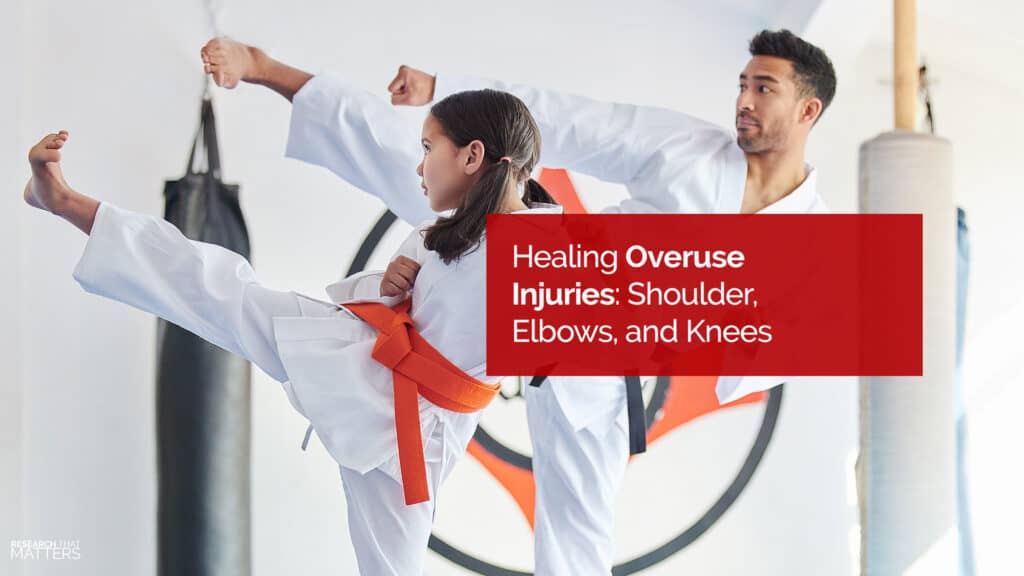
Common Causes of Shoulder Pain
The most common source of pain in the shoulder is the tendons. Your tendons attach the muscles of the shoulder to the bones. If a tendon becomes trapped, it can result in shoulder impingement. If a tendon becomes inflamed, you may hear it referred to as tendinitis or bursitis. And if a tendon becomes torn, you guessed it; you have a rotator cuff tear.
- Shoulder Bursitis: If the sac of fluid that cushions your shoulder becomes swollen and painful due to repetitive motions, you may have bursitis.
- Shoulder Impingement: If your tendons get pinched between or under the bones of your shoulder, it can lead to Lifting overhead repetitively can cause impingement, and it can result in swelling and pain.
- Rotator Cuff Tear: Your rotator cuff can become damaged due to overuse, injury, or Tears usually cause pain when you try to lift things, and you may hear a popping sound as you move.
Your shoulder and spine work together. While it may seem like they are two completely different areas, it’s been discovered that postural abnormalities can play a significant role in your likelihood of developing shoulder pain. Maintaining a full range of motion in your shoulder and spinal joints of your neck and mid-back can help reduce your chances of dealing with shoulder pain. If you notice shoulder discomfort or restricted movement, contact us for a complete evaluation. We’ll work to create a movement-based plan to help you find long-term relief.
Your Hip vs. SI Joint: What's the Difference?
It can be extremely confusing to figure out the difference between hip and SI (sacroiliac) joint pain. But being able to identify which one is the culprit is crucial when you are looking to find relief. Your SI joint is the connection between your tailbone (sacrum) and your pelvis. The SI joint is very fibrous and only moves a few millimeters. On the other hand, your hip is much less stable and allows your entire leg to move in every plane of motion.
Similar Pain, Different Sources
While the hip and SI joints are very different in structure and function, they share similar pain patterns, making it difficult to tell one from the other. It’s common to have SI joint pain mimic low back pain. Bending backward usually aggravates SI joint pain due to the compression that happens in the joint as you move.
Hip pain is more likely to occur when you walk or if you try to bring your knees to your chest.
- Hip Pain: Characterized by pain with walking, weight-bearing, and rotating the
- SI Joint Pain: Difficulties while standing, walking, climbing stairs, getting out of the
- Low Back Pain: Pain that radiates into the buttock or leg and may travel down to the
Suppose you’ve felt discomfort and aren’t exactly sure if it’s your hip, SI joint, or low back. It’s important to find a chiropractor who will provide a complete evaluation and treatment plan. The reason this is important is that our hips tend to become degenerative as we age, and if your doctor is only looking at a hip X-ray to determine a plan of care, you may find yourself getting treatment for a problem you don’t have. We take a holistic approach to our evaluations, and our movement assessments ensure that we can pinpoint your challenges so that you get the best care plan to live your highest quality of life.
Are You at Risk for Chronic Knee Pain?
Knees hurt? You’re not alone. Chronic knee pain is thought to affect up to 25% of adults and can significantly limit your mobility and quality of life. Your knee is a hinge-joint that primarily moves back and forth (flexion and extension) and allows some twisting or rotation. Every step you take places stress and strain on your knees, so it’s no surprise that trauma, misalignment, and degenerative changes can all take their toll.

Steps You Can Take to Reduce Knee Pain
While knee pain may not be entirely preventable, there are steps you can take to keep your knees as healthy as possible. At the top of the list is to watch your weight. For every pound you are overweight, your knee must absorb an extra 4 pounds of pressure when you walk, run or climb stairs. In addition, the cartilage in your knee is designed to last a lifetime if you take care of it.
Here are a few additional ways to keep your knees healthy and strong.
- Warm-Up Before Exercising: Stretching your quadriceps and hamstrings before and after you exercise is a smart way to reduce the chance of a flare-up of knee pain.
- Find Adequate Foot Support: Every step you take transfers force from the bottom of your foot to your knee. Therefore, your shoes should provide the support you need to keep your knees healthy for at least 10,000 steps per day.
- Maintain a Full Range of Motion: Ensuring your low back and hips are moving freely is essential to overall knee health.
The joints of your body should have a balance of strength and flexibility through their full range of motion. Unfortunately, it’s not uncommon for people with back issues to find themselves struggling with knee pain after limping around for a few weeks. We encourage our patients to be proactive with their health. Use the strategies above to help reduce your chances of knee pain, and be sure to call our practice if you notice any pain or restricted motion.
Tennis Elbow? But I don't even play tennis!
Tennis elbow isn’t just for athletes. Lateral epicondylitis (tennis elbow) is a painful condition that occurs when the tendons in your elbow are inflamed and overloaded due to repetitive motion. Because of the motion that occurs when swinging a racket, it’s commonly referred to as tennis elbow, but anyone who has a job that features repetitive arm motions may be at risk.
How to Reduce Tennis Elbow Pain
Tennis elbow can become a serious issue because of the pain and weakness that make it difficult to perform your daily tasks. Because it’s an injury caused by repetitive motions, and since many of these motions are essential to your job, finding ways to decrease the inflammation and improve biomechanics is critical. Three natural ways to help reduce the pain associated with tennis elbow include:
- Rest: Giving your arm time to rest is important to stop the cascade of inflammation and pain.
- Ice: Icing, a few times per hour, is a smart strategy to reduce pain and inflammation.
- Technique: Be mindful of how you are moving your arm, use proper ergonomics, and use a brace for a short time if necessary.
Tennis elbow is usually not a condition that will go away on its own. However, we’ve found two key strategies for reducing the pain associated with tennis below. First is receiving a plan of care that includes at-home exercises to strengthen your supporting muscles. The second is receiving adjustments, when necessary, to improve the motion and movement of your elbow joints. If you or someone you know has struggled with tennis elbow, give us a call so that we can provide you with a plan to find relief.
Suffering with Shoulder, Hip, or Elbow Pain?
Call or schedule an appointment online to see how we can help reduce your pain and help your body begin healing.
Schedule an AppointmentContact Us
